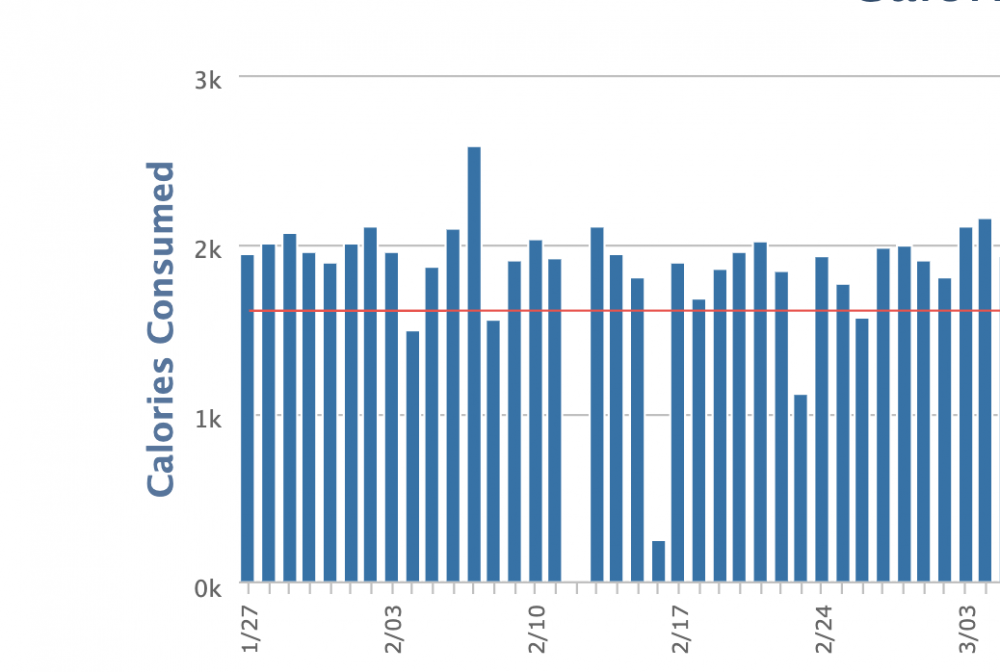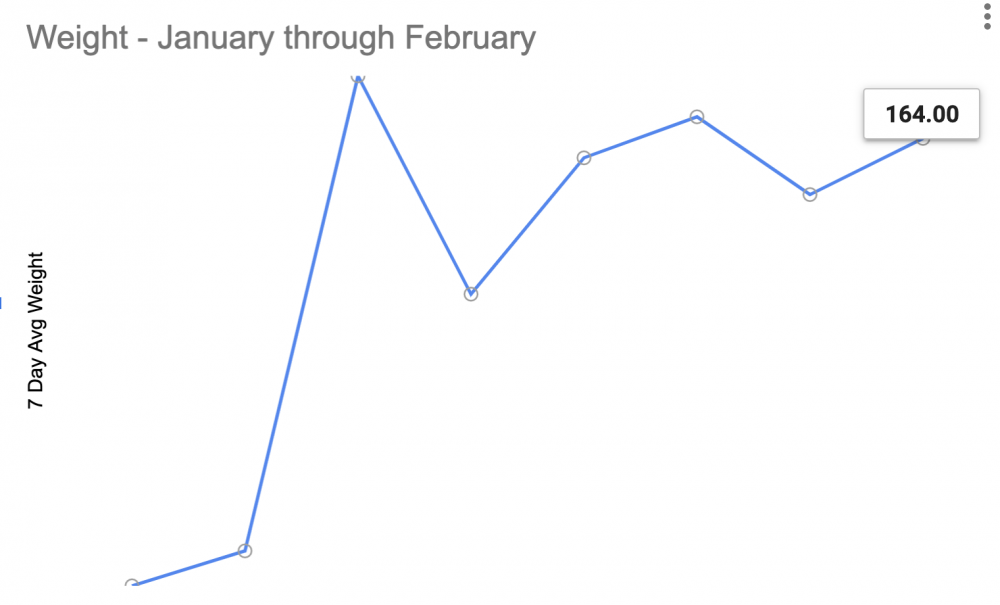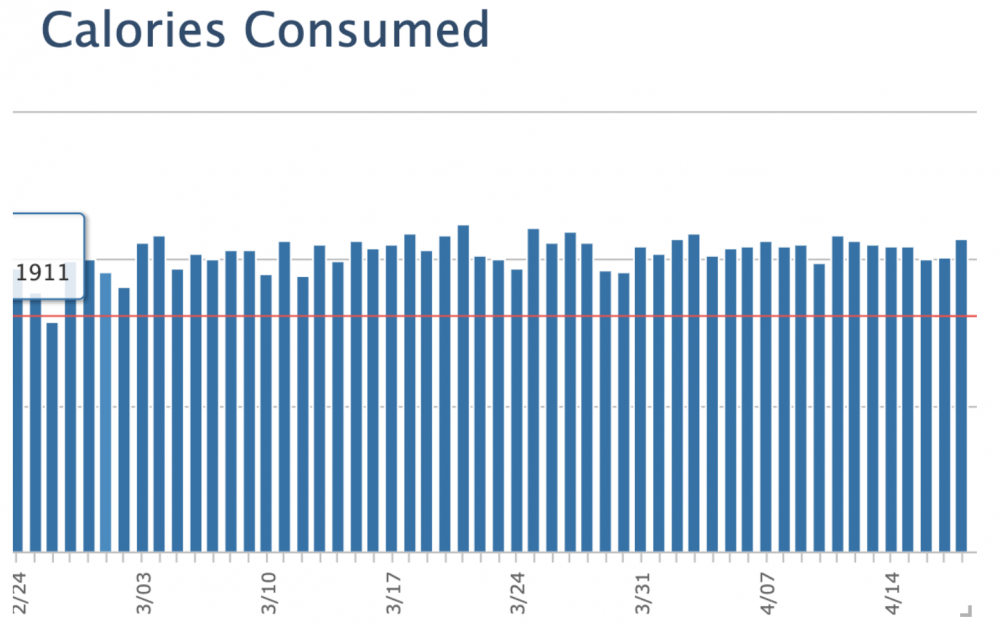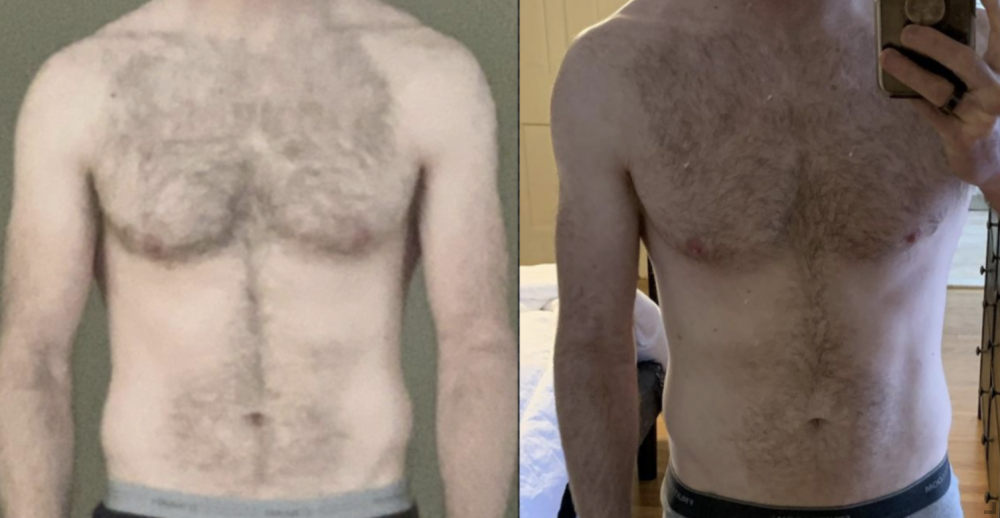This post originally appeared on the “Better Questions” email list. If you’d like to get one email like this a week, please sign up at BetterQuestionsEmail.com. Thanks!
——
Hi ,
(A brief word of warning. While there is nothing salacious in this letter at all, it does include a shirtless photo. If that’s inappropriate for wherever you’re reading this, be aware. Cool? Cool).
What’s the positive opposite?
Last week, we discussed “ironic thought processes” – the idea that our minds will inevitably turn towards that which we seek to avoid.
If we can’t avoid or stop our thoughts – and if thoughts are the beginning of action – how do we control our actions?
By focusing our energy on what we want.
And we do that with “priming.”
The process for this is simple. The urge, for someone who loves complexity like me, is to over-complicate it.
I’ll do my best to avoid that today.
(The following approach is taken from the excellent Priming: Programming the Mind for Habit Change and Success, by Dr. Clifton Mitchell. If you’d like a far more in-depth exploration of this topic, complete with some theories on why it works, I’d recommend picking it up).
Let’s say you want to break a habit – or build a new one.
Let’s say you want to move towards a goal with your subconscious mind helping you along the way, rather than fighting against you.
There are four steps to making that happen:
- Define what you are currently doing that you dislike, or is moving you in the wrong direction.
- Precisely define the opposite of what you are currently doing.
- Create a present-tense statement that states you are doing the new positive opposite behavior.
- Repeat to yourself hundreds of times a day.
That’s it. That’s priming.
…..
If you are anything like me, your initial response to this was “Bullshit.”
Life is complex and I expect anything effective to be complex as well. Saying something to yourself over and over feels like new-age feel-good pseudoscience.
Could this possibly work?
I like testing things, and since this was an easy one to test (with no possible side effects other than boredom) I decided to give it a go.
I’m in a nutrition program that relies on accurate weighing and tracking of your food intake. I noticed that my accuracy in measuring had declined since the end of 2020.
Here’s my calorie intake from January of 2021 through the end of February:

My plan was to eat around 2000 calories a day. The blue columns represent the amount I ate, the empty or very low days represent days I forgot to track.
While I’m more or less on point, you can tell there’s a significant amount of variation around that 2000 calories mark.
You can see this reflected in my weekly rolling average weight over this period:

(This graph is log scale for clarity; each point on the line represents 7 days worth of weigh-ins, averaged together. The bottom point is a starting weight of 161.94; I ended February at a weight of 164 lbs).
From experience, I knew that the closer I ate to plan – the more painstakingly I weighed, measured, and tracked my food – the more effectively I could control my weight.
So I went through the process above and came up with a positive statement:
“I effortlessly eat on my diet plan every single day and I love it.”
I then proceeded to repeat that statement to myself as many times as possible each day.
On my bike ride into work.
At work.
In the shower.
While brushing my teeth.
Any time I had a spare moment, I made sure to repeat the statement.
What happened?
Here’s my calorie tracking from March 1st (when I first started priming):

While there’s still some variation around the 2000 calorie mean, there is far less than in the prior period.
How did that affect my weight?

From our peak on March 1st of 164 lbs, we have dropped down to nearly 2 lbs below our previous low.
While I’m not able to measure body fat percentage, I do think you can see the difference in these photos (left was taken in January, right was taken at end of March):

What I found most interesting, however, was the feeling that things had gotten easier.
Admittedly, this is not an easy thing to quantify or track. Nor did I bother to isolate the variable of priming in this case (I also, for example, am experimenting with avoiding all social media).
But subjectively, I certainly experienced the process of weighing and tracking all my food very differently. There was less of a struggle over the process, and far less temptation to stray from the plan or “cheat around the edges” the way I did at the beginning of the year.
Based on the strength of the results in this test – and due to the fact that priming costs nothing and carries little to no risk of adverse effects – I’m going to continue using it as a tool for behavior change.
From my experience so far, I’d like to point out a few final points:
Choosing the right action is paramount. I like the idea of pinpointing the negative and then inverting it. Make sure to pick something that’s both actionable (i.e., it’s a thing that you can do, not a state or feeling) and impactful (really spending some thinking about the thing you can do that will make everything else easier. I knew that focusing on accuracy in measurement was a cornerstone habit for me – yours will vary).
Rhythm makes repetition easier. My priming statement had a certain rhythm that made it very easy to sing ad nauseam. I actually tried to change it mid-way (I wanted to swap in “easily” for “effortlessly”), but found that, because the rhythm didn’t work as well, I reverted to the classic version almost immediately.
Don’t look for any obvious change. It’s tempting to constantly check yourself to “see if it’s working.” Just do it without any attachment to the outcome. If you like, arrange an experiment in the way that I did – with a clear start and stop date, and clear measurements of success or failure. That way you can check in at the end of the testing period and see what happened. Otherwise, the effects are subtle (possibly even placebo, who knows?), and see to work best when you just things happen naturally.
And that’s it. That’s how you tap into your subconscious mind and make it work for you:
- Define what you are currently doing that you dislike, or is moving you in the wrong direction.
- Precisely define the opposite of what you are currently doing.
- Create a present-tense statement that states you are doing the new positive opposite behavior.
- Repeat to yourself hundreds of times a day.
Give it a shot, and if you do, let me know how it goes!
Yours,
Dan
Cool Things To Read:
Really enjoyed the article “How to Think Like a Detective.” While it’s ostensibly about investigation, everything boils down (as things tend to do) to cognitive biases and our awareness of them:
“If you learn how to systematically shift focus and rewrite your understanding, you’ll increase the chance of discovering a quick and simple solution to your problem. In more complex and high-risk matters, following the expert-detective approach will help you reduce the risk of prematurely jumping to conclusions and therefore avoid serious blunders on your way. With practice, we can adjust the brain’s automatic wiring, unveil our inner detective, and improve our decision-making. This is like any other skill. The more you practise, the better you’ll get.”

Leave a Reply